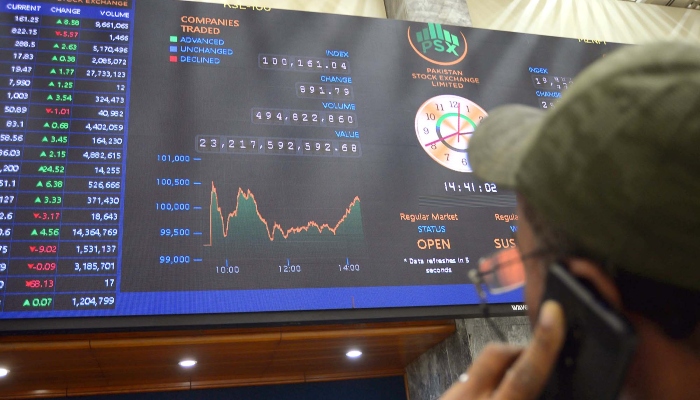
The capital market rebounded on Wednesday after Tuesday’s decline, driven by improving macroeconomic indicators and recent policy measures that boosted investor confidence.
The benchmark KSE-100 index jumped 1,376.02 points, or 1.2 percent, in early trading to hit an intraday high of 116,236.7 points, reflecting renewed optimism among market participants .
Pakistan’s current account recorded its largest monthly surplus in almost a decade, recording a surplus of $729 million in November 2024. This is the fourth consecutive month of surplus and represents the highest monthly figure since February 2015, a significant turnaround from November’s $148 million deficit. 2023.
For the first five months of fiscal 2025, the current account surplus stands at $944 million, compared to a deficit of $1.67 billion during the same period last year. This improvement is attributed to a 14% monthly reduction in the trade deficit, a 43% drop in the services deficit and a reduction in interest and dividend repatriations.
Prime Minister Shehbaz Sharif welcomed the record current account surplus, calling it “extremely encouraging for the national economy.” He noted that this achievement would strengthen Pakistan’s international economic position and further boost investor confidence.
Net foreign direct investment (FDI) increased 31% year-on-year to $1.124 billion in the first five months of fiscal 2025, with a contribution of $219 million in November, an increase of 27 % compared to the same period last year. The main contributors to FDI were China, Hong Kong and the United Kingdom, with notable investments in the electricity and financial sectors.
Remittances also increased, rising 29% year-over-year to $2.9 billion in November and totaling $14.8 billion in the first five months of fiscal 2025. Government incentives promoting Formal banking channels and stable foreign exchange reserves, which amount to $16.6 billion (including $12.051 billion held by the SBP), have supported this growth.
The State Bank of Pakistan (SBP) recently reduced its policy rate by 200 basis points, bringing it down to 13%. This aggressive monetary easing aims to stimulate economic activity amid falling inflation, which reached 4.9% in November, its lowest level since April 2018.
In a briefing, SBP Governor Jameel Ahmad expressed optimism about achieving lasting economic stability, forecasting that foreign exchange reserves will exceed $13 billion by the end of fiscal 2025 .
Tuesday’s session was marked by volatility, with the KSE-100 index breaching the 117,000-point mark to hit an intraday high of 117,039.17 before profit-taking took it to a low of 113,688.54. The index closed at 114,860.68, down 1,308.73 points (1.13%), as traders booked profits after recent record sessions.
Despite intermittent volatility, the PSX remains supported by strong macroeconomic fundamentals, including declining inflation, strong remittance inflows, and rising FDI.
Analysts expect the market to maintain a positive trajectory, supported by ongoing monetary easing and favorable economic conditions, although profit-taking may cause short-term fluctuations.
